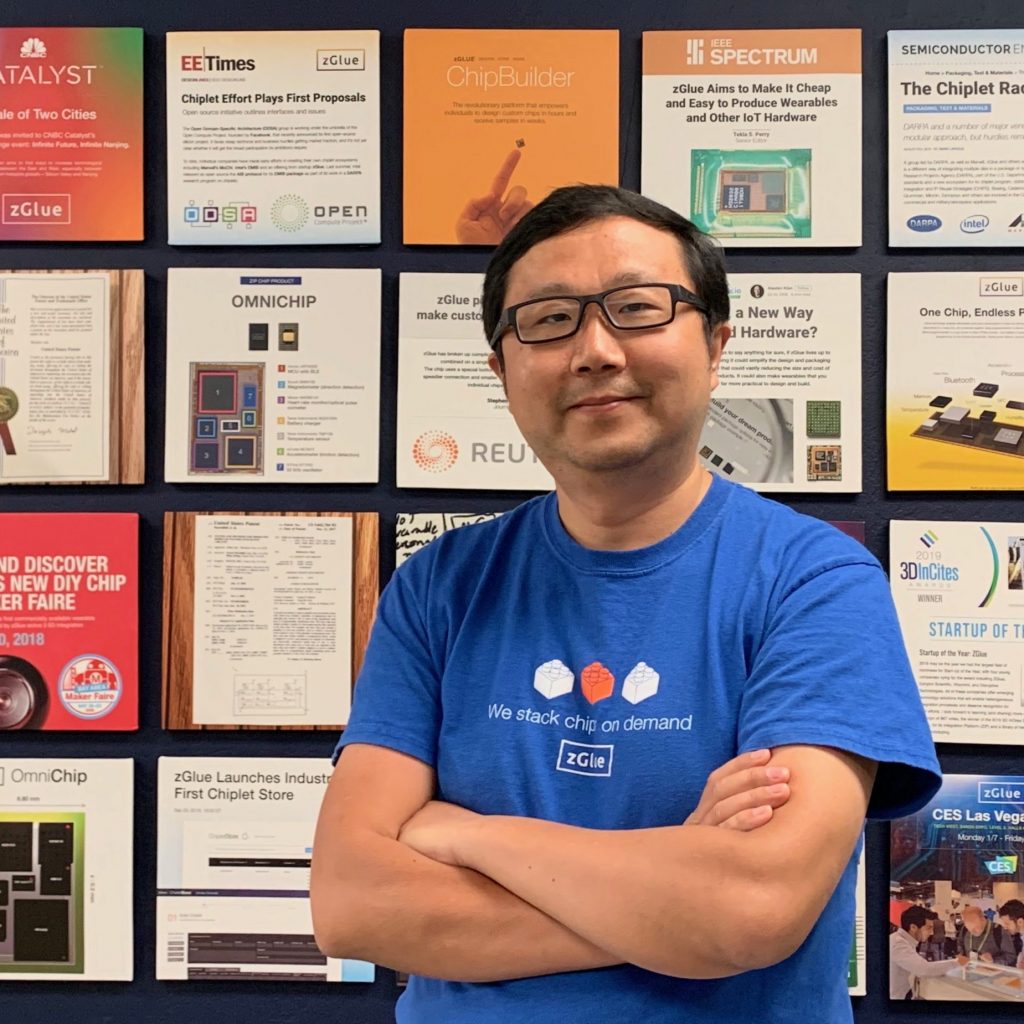Podcast: Play in new window | Download
Subscribe: Apple Podcasts | RSS
Welcome Dr Ming Zhang, CEO and founder of zGlue!
- What is zGlue? It’s a company that helps engineers integrate Chiplets into a single package, AKA heterogenous chip integration.
- ASIC are monolithic and require much higher capital investment and testing.
- The key advantage of zGlue is miniturization
- zGlue has an reference chip they publish called the Omnichip. It has Bluetooth, temp sensor, memory, and other sensors, 7 Chiplets in total.
- The output package is an LGA that is 8 mm x 6 mm.
- The system complexity needs to be high enough for it to matter: it’s unlikely engineers will need this service to put together 2 simple chips.
- It means working outside the PCB workflow, which will be an adjustment. The new workflow is entirely within the ChipBuilder environment though.
- The Chiplets a placed onto a “Smart Fabric”, which is a programmable interconnect with some small functions built in.
- There is also “common denominator IP”, like LED drivers and security elements
- The example Omnichip targets IoT products
- Good candidates for zGlue are constrained system by design, which means they probably fit into a theme like “IoT” and the associated included elements in the smart fabric.
- zGlue also support custom smart fabric, but there will be added cost, time for getting it made/tested.
- This “bigger LEGO board” is different than what Adrian Tang talked about, making custom systems for each design.
- How does smart fabric handle power/analog/RF? RF on the top metal, the analog and power are different “taps”. The more digital a signal, the deeper it goes into the fabric. The metal requires customization in the mask.
- There are “Templates“, which should help people get started, as well as an “Open Chiplet template“, which was released 2 weeks ago with Google.
- physics decisions based on design rules
- Go shopping on zGlue on their “Chiplet Store“
- Templates are top down
- There is no licensing agreement required for each chip, because it’s like buying the chip off the shelf (sans the polymide package). Almost all Chiplets are off the shelf parts.
- Example templates:
- Edge node AI (detect gestures and voice)
- Medical
- Industrial
- Wearables
- Smart Graziery
- For pricing, there is a unit cost and development cost. The best way to get started is the “Shuttle program”, which is $25K for 10 components (and includes development cost).
- Once you get to production, there are options for consignment or non-consignment
- Development takes about 1 to 3 months.
- You can buy some of their “off the shelf” components for even less, such as the GEM1, GEM2, or Omnichip design.
- They use TSMC for silicon fab and ASE for assembly.
- At the assembly facility, the Chiplets come on tape and reel and are placed in a similar manner to other components.
- Who does Ming say they’re targeting? “Hardware innovators”, namely people that are trying to go impossibly small or impossibly fast.
- For the brave, you can communicate directly with the smart fabric during debug.
- Ming thinks all things will converge and many designs will go towards this path in the future.
- zGlue was conceived to stack things and they will start going from 2D to 3D designs in the future.
- For more information, check out the specific links above or check out zglue.com.
- They will be exhibiting at DAC/SemiCon West (July 20-24) with a “Virtual Booth”. The link for that is not yet active, but you can register for the event

